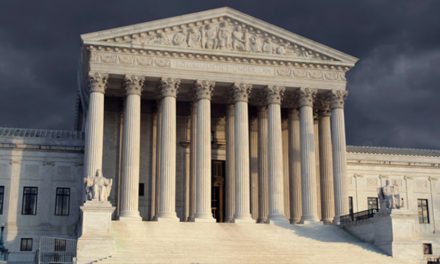The 4th U.S. Circuit Court of Appeals has struck down a 2019 rule from the U.S. Department of Health and Human Services (HHS) designed to prevent taxpayer funds from being used by family planning agencies that refer clients for abortions under a program known as Title X. The result, which applies only to Maryland, could open the door for abortion providers like Planned Parenthood to access Title X funds there.
Title X was passed by Congress in 1970 during the Nixon administration, and its purpose was to “promote public health and welfare by expanding, improving, and better coordinating the family planning services and population research activities of the federal government.” It was designed specifically to help low-income and uninsured families through federal grants to service providers. Today the annual budget for Title X is approximately $268 million.
The program has never been permitted to use federal funds for abortions. In 1988, HHS issued rules during the George H.W. Bush administration prohibiting Title X grantees from referring clients for abortion, also known as the “gag rule.” That rule was upheld by the U.S. Supreme Court in Rust v. Sullivan in 1991.
Fast forward to 2019. The HHS rule was modified during the Clinton and Obama administrations to allow abortion referrals. That resulted in Planned Parenthood receiving tens of millions of dollars in federal grants for family planning which allowed its “counselors” to refer women to its abortion facility – sometimes just down the hallway.
HHS issued a proposed new rule reinstating a slightly modified version of the 1980s rule that allowed generalized counseling on post-conception options, which could include abortion, so long as no direct referrals were made. A requirement that Title X grantees maintain separate physical premises and accounting treatments between their Title X activities and any abortion services was added.
The rule was challenged on both ends of the country, as abortion sellers and liberal states claimed that HHS did not have the authority to change the law and failed to comply with the administrative procedures required for it to adopt the new rule.
On the west coast earlier this year, the 9th U.S. Circuit Court of Appeals in San Francisco upheld the rule in a 7-4 decision as within the proper scope of HHS’ authority, citing the 1991 Rust v. Sullivan decision.
However, the 4th Circuit, headquartered in Richmond, Virginia, disagreed with the 9th Circuit’s reasoning and ruled 9-6 against HHS.
The different results from the two circuits sets up what is called a “circuit split,” which strongly argues in favor of the U.S. Supreme Court getting involved at some point to resolve the difference of opinion. The high court doesn’t have to accept the current case in order to do so. It could choose to wait for other circuit courts to weigh in on the issue before getting involved.
One inescapable fact emerges from both circuit court decisions, and that is how the judges’ votes correlated with the party of the president who appointed them. All seven votes on the 9th Circuit in favor of the rule came from Republican-appointed judges, while every one of the four dissenters in that case were appointed by Democrat presidents. The same held true in the 4th Circuit. All nine judges who struck down the rule were Democrat appointees, while the six dissenters were appointees of Republican presidents.
Federal elections impact how cases get decided. For example, President Donald Trump has appointed more than 200 federal judges since Inauguration Day in 2017, including 10 judges to the 9th Circuit. There are currently six judges sitting on the 4th Circuit who were appointed by President Barack Obama.
Photo from Ken Wolter / Shutterstock.com
Visit our Election 2020 page






